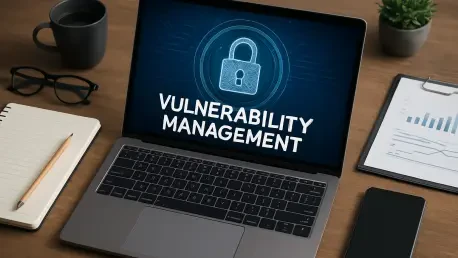In an era where the frequency and sophistication of cyberattacks are surging, organizations worldwide continually seek robust frameworks to secure their digital landscapes. Amid this pressing need, Continuous Threat Exposure (CTE) and Vulnerability Management (VM) have emerged as pivotal components in cybersecurity defense strategies. While both play crucial roles, understanding their differences and how they can best be utilized in tandem presents an important discussion in contemporary cybersecurity.
Contextual Overview
Continuous Threat Exposure refers to a systematic and iterative approach that involves ongoing discovery, prioritization, validation, and response toward security vulnerabilities and threats. It aims to provide real-time insights and mitigation strategies against emergent cyber exposures. Vulnerability Management, on the other hand, focuses on identifying, assessing, prioritizing, and remediating vulnerabilities within an organization’s IT environment. While traditionally addressing known weak spots, VM is a cornerstone for cybersecurity, ensuring foundational vulnerabilities are managed effectively.
Understanding the purpose and application of CTE and VM is critical as organizations strive to enhance their cybersecurity posture. CTE offers advanced methodologies encompassing real-world simulations and holistic cybersecurity assessments. These components provide insights into potential threats that might arise from external sources. Meanwhile, VM remains essential for organizations to continuously map and patch vulnerabilities, serving as a preventative measure against exploitations. Together, they form a complementary defense mechanism that strengthens an organization’s cybersecurity framework.
Comparative Analysis
Proactivity and Scope
Continuous Threat Exposure is inherently proactive, focusing on predicting and addressing threats before they materialize into attacks. Unlike VM, which traditionally revolves around patching identified vulnerabilities, CTE targets potential threats sourced from various vectors, including unknown attack paths. While VM deals with the vulnerabilities present within the internal environment, CTE covers a broader scope, continually monitoring the external threat landscape.
The scope of CTE is expansive, considering not only current vulnerabilities but also potential exposure points overlooked by conventional security measures. Vulnerability Management, though narrower, effectively addresses the need for consistent evaluation and mitigation of known vulnerabilities. The comprehensive reach of CTE complements the focused efforts of VM, creating a dynamic pairing for robust cybersecurity practices.
Assessment and Validation
Assessment methodologies in CTE and VM differ significantly, reflecting their unique focuses. CTE employs methods such as penetration testing, red-teaming exercises, and adversarial simulations, aiming for real-world applicability. These methods provide insights into potential security threats that mirror actual attack scenarios. Conversely, VM emphasizes scanning and assessing known vulnerabilities, prioritizing them based on risk and impact.
Validation also presents distinct approaches; CTE involves real-world testing to confirm the effectiveness of security measures. This includes simulating live attack scenarios to validate an organization’s resilience against threats. VM, however, focuses on prioritization based on contextual risks, ensuring that critical vulnerabilities are addressed promptly. Both validation processes highlight the importance of targeted and resource-efficient security strategies.
Integration and Execution
Integrating Continuous Threat Exposure and Vulnerability Management within organizational security frameworks requires distinct considerations. CTE is often integrated using advanced tools that analyze threat intelligence continuously, reallocating resources as required. This process involves significant toolset integration and team mobilization to ensure swift responses to detected exposures.
Vulnerability Management typically integrates seamlessly into existing security systems, with automated tools facilitating regular vulnerability scans and prioritization mechanisms. VM’s execution focuses on steady resource allocation, ensuring that regular assessments and patches occur efficiently. Together, CTE and VM necessitate harmonized integration and execution strategies to maximize an organization’s defense capabilities.
Challenges and Considerations
Implementation of Continuous Threat Exposure faces challenges, including resource demands and the complexity of managing continuously evolving threats. Organizations must balance technological advancements and practical resource allocation to leverage CTE effectively. Meanwhile, Vulnerability Management requires strategic oversight to maintain focus on essential vulnerabilities without overwhelming security teams with low-priority issues.
When considering ethical and operational obstacles, both strategies must address privacy concerns and the potential for operational disruptions during assessments. Aligning both CTE and VM with organizational goals demands transparency, collaboration, and thorough awareness of the associated risks and benefits.
Conclusion and Recommendations
From the analysis, it is evident that Continuous Threat Exposure and Vulnerability Management serve unique yet complementary purposes in bolstering cybersecurity. Organizations should consider their specific security needs when deciding between the two. For those seeking expansive coverage of potential threats, integrating CTE with existing systems offers a forward-thinking approach. Meanwhile, VM remains indispensable for organizations needing consistent vulnerability mitigation.
Recognizing the strengths inherent in both strategies, organizations benefit most by incorporating both CTE and VM into their overarching security strategy. By doing so, they ensure a robust, adaptable, and comprehensive cybersecurity defense capable of anticipating and mitigating various threats effectively. As digital threats continue evolving, the journey toward resilient cybersecurity frameworks must embrace both proactive and preventative measures.









